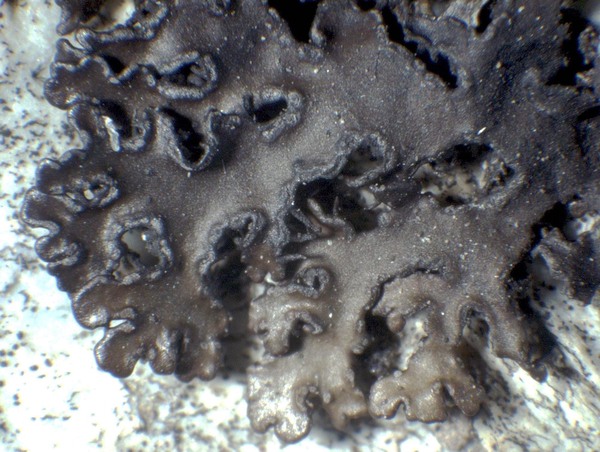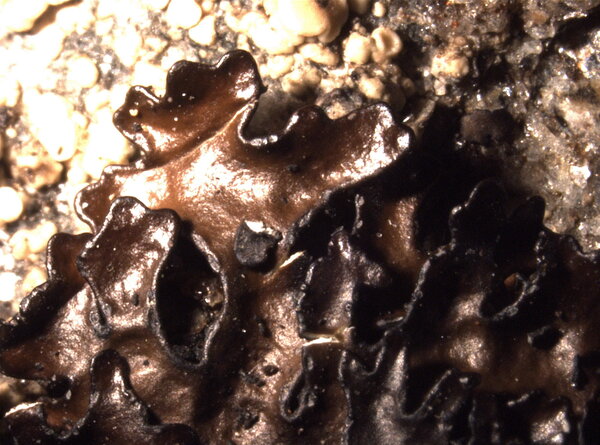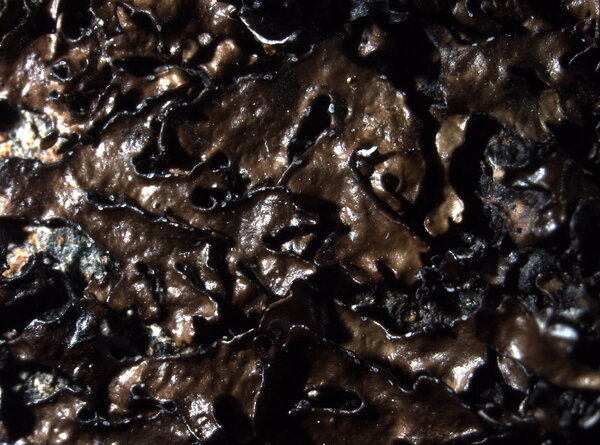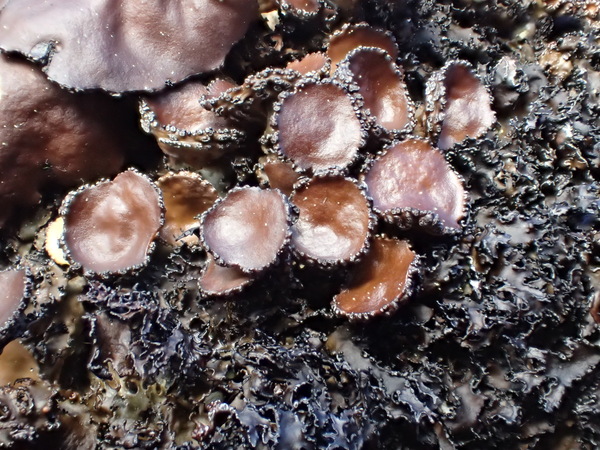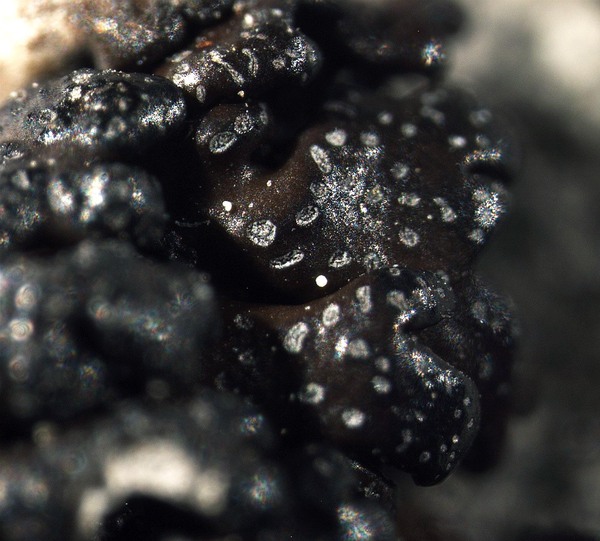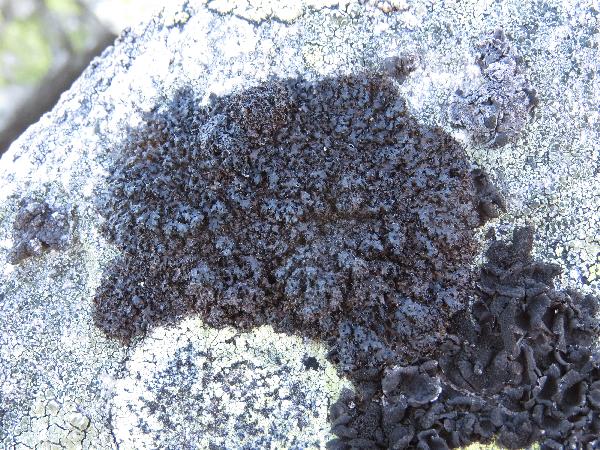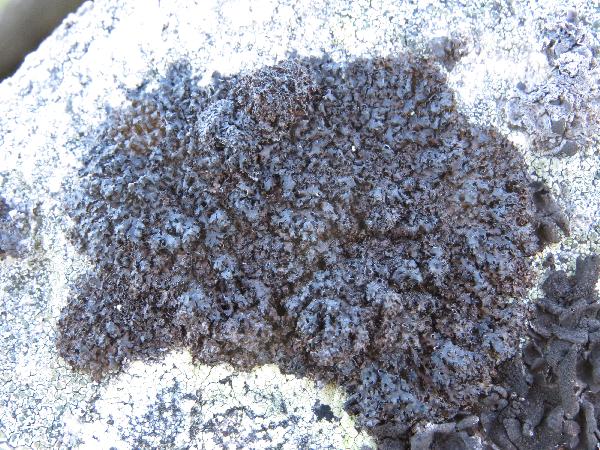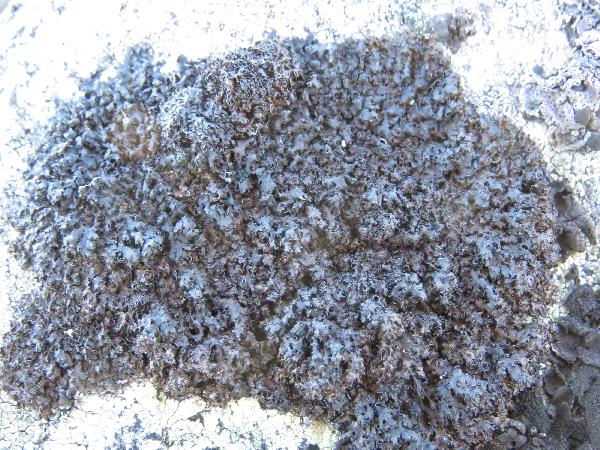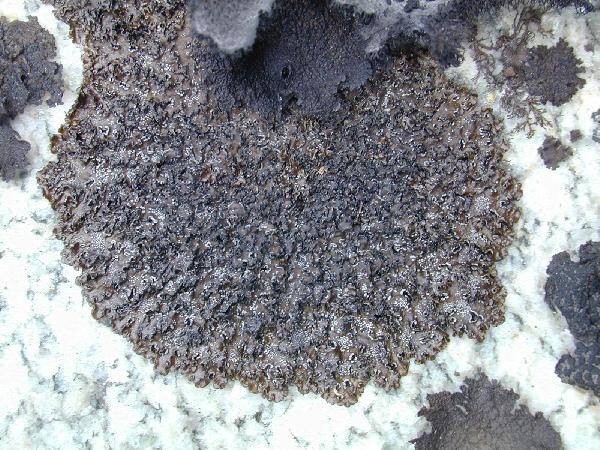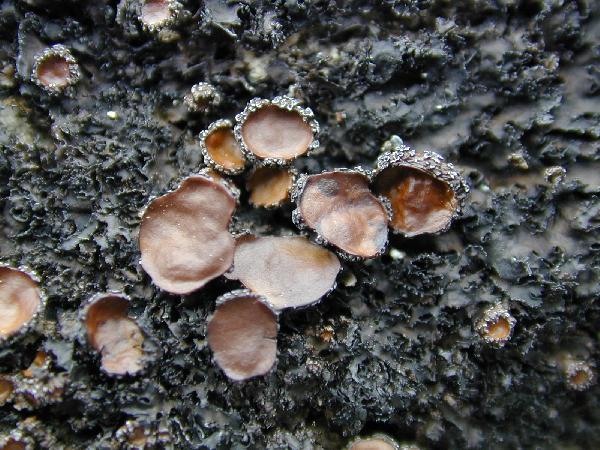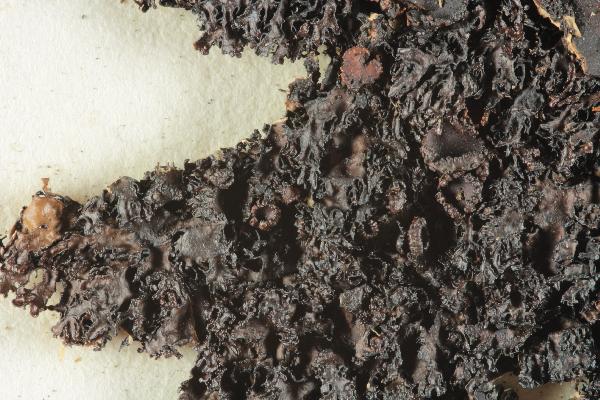Melanelia hepatizon (Ach.) A. Thell
Nova Hedwigia, 60: 419, 1995. Basionym: Lichen hepatizon Ach. - Lichenogr. Suec. Prodr.: 110, 1799.
Synonyms: Cetraria fahlunensis auct. p.p. non (L.) Schaer.; Cetraria hepatizon (Ach.) Vain.; Cetraria polyschiza (Nyl.) Jatta; Imbricaria fahlunensis auct. p.p.; Parmelia fahlunensis auct. p.p.; Parmelia fahlunensis var. hepatizon (Ach.) Ach.; Platysma hepatizon (Ach.) Vain.; Platysma polyschizum Nyl.; Tuckermannopsis hepatizon (Ach.) Kurok.
Distribution: N - Frl (Tretiach & Hafellner 2000), Ven (Nascimbene & Caniglia 2002c, Watson 2014), TAA (Caniglia & al. 2002, Nascimbene & Caniglia 2002c, Thell & al. 2002, 2004, 2009, Nascimbene 2006c, Nascimbene & al. 2006e, 2022), Lomb, Piem (Morisi & Sereno 1995, Isocrono & al. 2004, Morisi 2005, Rico & al. 2005, Isocrono & Piervittori 2008), VA (Piervittori & Isocrono 1999). C - Sar. S - Si.
Description: Thallus foliose, heteromerous, dorsiventral, adnate to loosely adnate, forming 1-10(-20) cm wide, orbicular rosettes. Lobes 5-20 mm long, (0.25-)1-2(-2.5) mm wide, irregularly divided and branched, slightly concave to flat, with thickened and somewhat raised margins. Upper surface dark brown to black (greenish brown in shade-forms), more or less glossy, with rounded to elongate, whitish, mostly marginal pseudocyphellae; lower surface dark brown to black, matt, somewhat paler at margins, with scattered, mostly simple, black rhizines. Upper cortex paraplectenchymatous, with a non-pored epicortex, the cell walls containing isolichenan; medulla white; lower cortex paraplectenchymatous. Apothecia lecanorine, mostly submarginal, subpedicellate, 2-5(-9) mm across, with a dark disc and a usually knobby and pseudocyphellate thalline margin. Epithecium brownish; hymenium and hypothecium colourless. Asci 8-spored, broadly clavate, the K/I+ blue tholus penetrated by a faintly amyloid apical cushion with parallel or diverging flanks, the wall K/I-, surrounded by a K/I+ blue outer layer, Lecanora-type. Ascospores 1-celled, hyaline, ellipsoid, (6-)7-10.5 x 4.5-6(-7) µm. Pycnidia frequent, mostly marginal, globose to elliptical, sessile or on up to 0.3 mm tall projections, often grouped into gall-like areas. Conidia bifusiform, dumbbell-shaped (thickened at both ends), 3.5-6(-7) x 1-1.5 µm. Photobiont chlorococcoid. Spot tests: upper cortex K-, C-, KC-, P-, N-, UV-; medulla K+ yellow, C-, KC- or KC+ faintly yellow-orange, P+ yellow, I-. Chemistry: stictic and norstictic acids (major), cryptostictic, menegazziaic and constictic acids (minor).Note: a circumpolar, arctic-alpine lichen found on hard siliceous rocks wetted by rain, with optimum above treeline; somehow less bound to cold-humid sites than the similar but unrelated Cetraria commixta; widespread in the Alps, much rarer in the high Mediterranean mountains.
Growth form: Foliose, broad lobed
Substrata: rocks
Photobiont: green algae other than Trentepohlia
Reproductive strategy: mainly sexual
Commonnes-rarity: (info)
Alpine belt: common
Subalpine belt: rare
Oromediterranean belt: very rare
Montane belt: extremely rare
Submediterranean belt: absent
Padanian area: absent
Humid submediterranean belt: absent
Humid mediterranean belt: absent
Dry mediterranean belt: absent
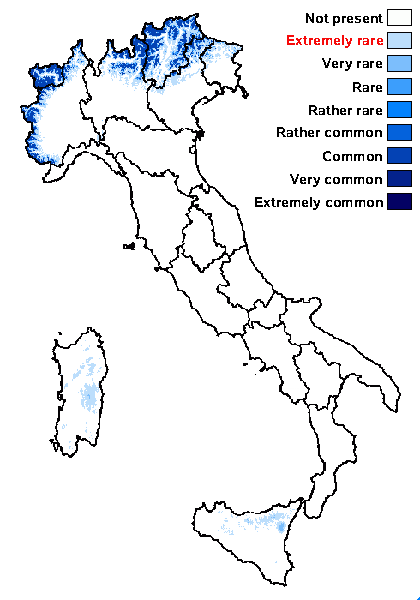
Predictive model
Herbarium samples
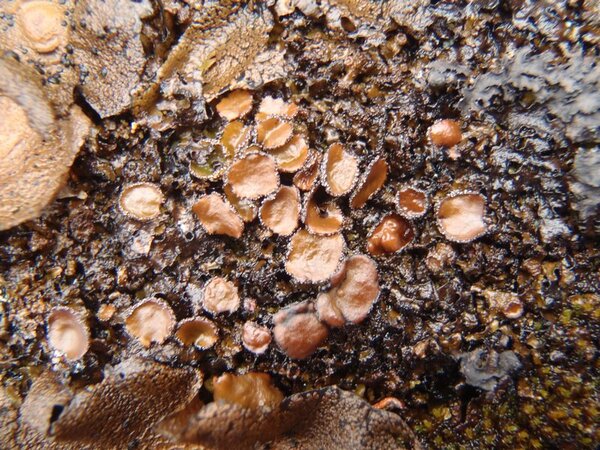

Curtis Randall Björk – CC BY-SA 4.0
Northwest Territories, near MacKay Lake Date: 2011-08-02 On ground in brushy tundra
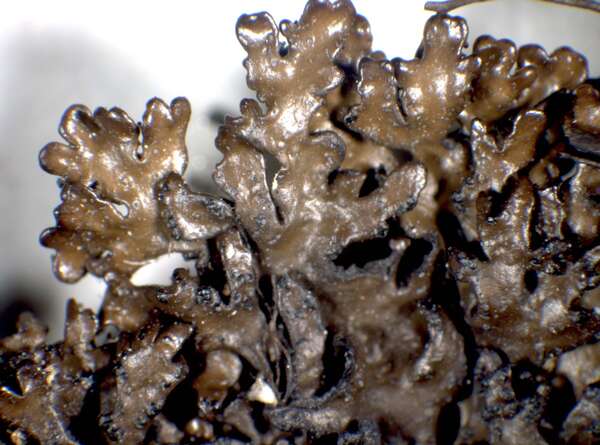

P.L. Nimis; Owner: Department of Life Sciences, University of Trieste
Herbarium: TSB (5025)
2001/12/05
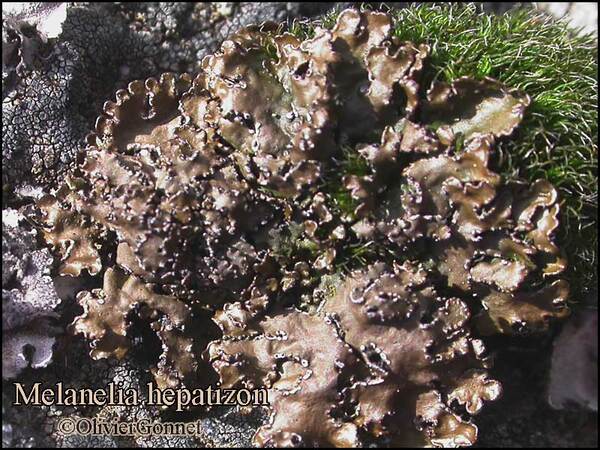
Courtesy Danièle et Olivier Gonnet - Source: https://www.afl-lichenologie.fr/Photos_AFL/Photos_AFL_M/Melanelia_hepatizon.htm
France, sur écorce de feuillu - Excursion AFL 2005 - Lozère
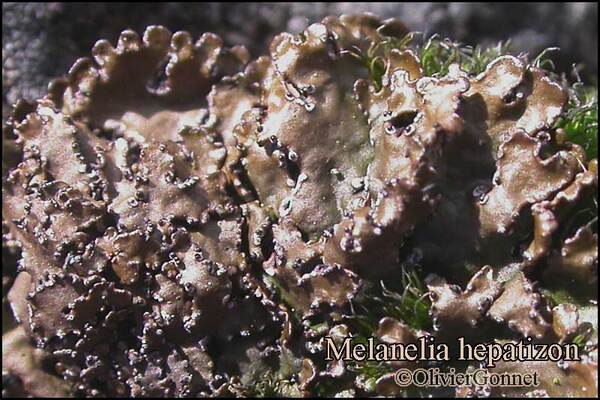
Courtesy Danièle et Olivier Gonnet - Source: https://www.afl-lichenologie.fr/Photos_AFL/Photos_AFL_M/Melanelia_hepatizon.htm
France, sur écorce de feuillu - Excursion AFL 2005 - Lozère
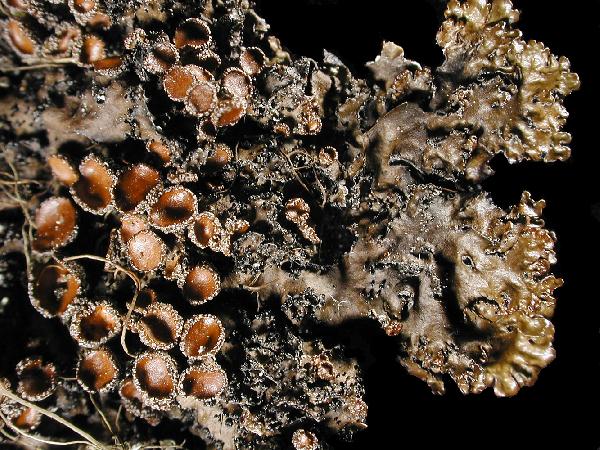
Ulrich Kirschbaum CC BY-SA 4.0 – Source: https://www.thm.de/lse/ulrich-kirschbaum/flechtenbilder
Sweden: Dalarna. on granite

Collezione lichenologica Abramo Massalongo del Museo di Storia Naturale G. Ligabue di Venezia - Autori: Seggi, Linda; Trabucco, Raffaella Proprietà: Fondazione Musei Civici di Venezia - CC BY-NC
Italy, Veneto, in M. Antelao 2000 me. supra mare 1855
as Parmelia fahlunensis
Growth form: Foliose, broad lobed
Substrata: rocks
Photobiont: green algae other than Trentepohlia
Reproductive strategy: mainly sexual
Commonnes-rarity: (info)
Alpine belt: common
Subalpine belt: rare
Oromediterranean belt: very rare
Montane belt: extremely rare
Submediterranean belt: absent
Padanian area: absent
Humid submediterranean belt: absent
Humid mediterranean belt: absent
Dry mediterranean belt: absent

Predictive model
| Herbarium samples |


Curtis Randall Björk – CC BY-SA 4.0
Northwest Territories, near MacKay Lake Date: 2011-08-02 On ground in brushy tundra


P.L. Nimis; Owner: Department of Life Sciences, University of Trieste
Herbarium: TSB (5025)
2001/12/05

Courtesy Danièle et Olivier Gonnet - Source: https://www.afl-lichenologie.fr/Photos_AFL/Photos_AFL_M/Melanelia_hepatizon.htm
France, sur écorce de feuillu - Excursion AFL 2005 - Lozère

Courtesy Danièle et Olivier Gonnet - Source: https://www.afl-lichenologie.fr/Photos_AFL/Photos_AFL_M/Melanelia_hepatizon.htm
France, sur écorce de feuillu - Excursion AFL 2005 - Lozère

Ulrich Kirschbaum CC BY-SA 4.0 – Source: https://www.thm.de/lse/ulrich-kirschbaum/flechtenbilder
Sweden: Dalarna. on granite

 INDEX FUNGORUM
INDEX FUNGORUM
 GBIF
GBIF
 DOLICHENS
DOLICHENS
